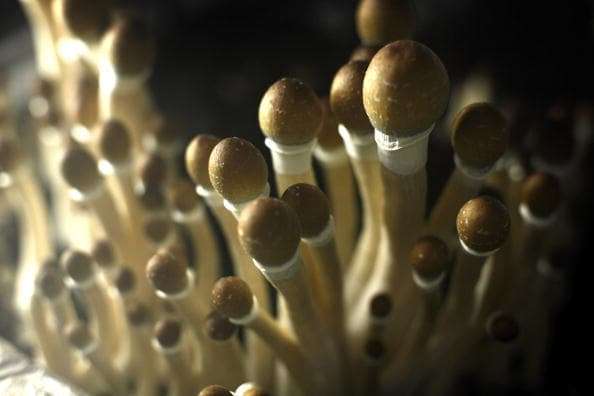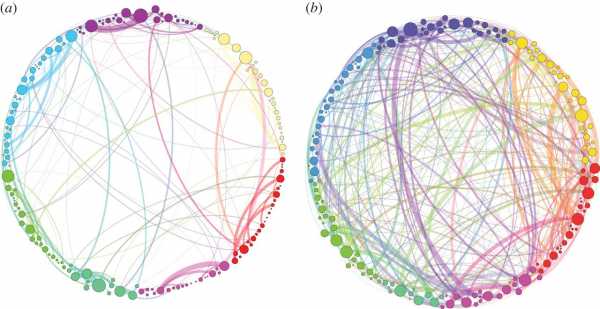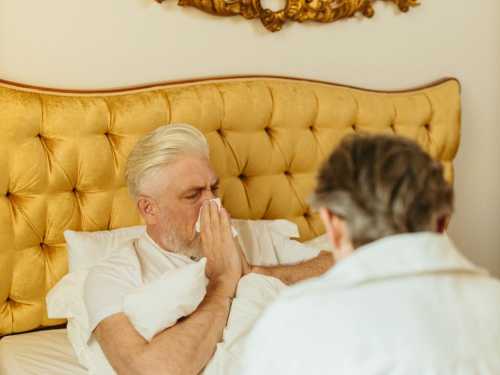
The first time I tried ayahuasca, a plant concoction containing the natural hallucinogen DMT, I remember thinking: “Just let go. Whatever happens, just let go.”
Eventually, I did let go, and what followed was the most rewarding, and harrowing, experience of my life. I was forced to confront my own ego in a way I never had before, and I wasn’t quite prepared for what I saw.
Even today, several months after, the impact lingers. I tried to recount the experience in this essay for Vox, and yet every time I read it, I can’t help but think how poorly my words captured what happened.
Michael Pollan, perhaps best known for The Omnivore’s Dilemma, has just released a new book about the science of psychedelics, titled How to Change Your Mind. Although he writes mostly about food, Pollan is a deep thinker whose core interest has always been our relationship to nature.
In How to Change Your Mind, he does what I attempted to do in my ayahuasca essay, namely describe what it’s like to take psychedelics. But beyond that, he also walks the reader through the history of these drugs and surveys the latest research into their therapeutic potential.
It’s a sprawling book that is likely to change how you think not just about psychedelic drugs but also about the human mind. Pollan isn’t a psychedelic evangelist. He admits to entering this project with a healthy skepticism about these drugs and the culture that surrounds them. But he finished the book convinced that the renaissance in psychedelic research that is now underway is long overdue.
I spoke with Pollan about what he discovered and why we might be on the brink of a revolution in mental health care.
A lightly edited transcript of our interview follows.
Your mind is not your brain
Sean Illing
I recently spent a week in Costa Rica taking ayahuasca several nights in a row. What the hell did I do to my brain?
Michael Pollan
The question is what did you do to your mind? Given what we know about psychedelics, your brain is almost certainly fine. One of the most striking things about psychedelics is that they’re not toxic. It’s very hard to say that about any other drug. There is a lethal dose of Tylenol or Advil out there, and indeed, most drugs, but there is, as far as we know, no lethal dose of psychedelics.
Are there risks involved with psychedelics? Absolutely. But I wouldn’t worry about your brain. To the extent that there are risks, they’re psychological, not physiological.
Sean Illing
The gap between the mind and the brain, between the psychological and the physiological, is not always clear, right?
Michael Pollan
You know, I spent a lot of time looking into neuroscience and consciousness studies, and they are still pretty separate worlds. And the truth is that we really don’t know very much about how brains produce minds. I use “mind” as a synonym for consciousness; it’s the experience we have of our inner life. But how that phenomenon arises from matter is not really understood.
Sean Illing
And this is where psychedelics become very interesting. The “mind” is real insofar as the lights are on and we’re subjectively experiencing things, but it also creates the illusion that we’re separate from the world. Our egos take over and keep us trapped in the stories we’re constantly telling ourselves about ourselves. And part of what you explore in this book is how psychedelics can help explode these mental habits.
Michael Pollan
Yeah, the latest brain imaging being done by scientists studying people who are tripping is very interesting. A lot of people who try psychedelics experience something called “ego dissolution,” which is what happens when the sense of self totally disappears. When people report this feeling, you can see a precipitous drop-off in activity in a part of the brain called the default mode network (DMN).
In the book, I reproduce an image of the wiring of the brain on a placebo and on psilocybin [the psychedelic compound produced in magic mushrooms], and it suggests that the altered states of consciousness people experience during trips may be the result of areas of the brain being rewired in ways that alleviate anxiety and depression and obsession and various other addictive behaviors.

Your brain on psychedelics
Sean Illing
Tell me more about the default mode network and why it’s so important to our evolving understanding of depression and mental health.
Michael Pollan
I should say in advance that a lot of this is well-informed theory, but much of it is still hard to prove. But I’ll try to separate out what’s speculation from what’s established. One of the things that is established in neuroscience is the existence of the default mode network. This is, evolutionarily speaking, the most recent part of the brain, and it’s closely connected to the brain regions responsible for memories and emotions.
So this network seems to play some kind of regulatory role in how the brain communicates with itself. One neuroscientist I interviewed called it the orchestra conductor of the neural symphony. Based on fMRI imaging, they think it’s involved in our ability to imagine the mental states of someone else and in our own self-reflection. When we think about ourselves, when we worry about the past or feel anxious about the future, this is our DMN at work.
The DMN helps us create a consistent story of ourselves across time, which is key to the formation of self-identity. So the most interesting function of the DMN is the maintenance of an autobiographical self. It’s how we take in new information and link it up to stories we tell ourselves about who we’ve been and who we want to be.
Sean Illing
So if the ego has a neurological home, it’s in the default mode network?
Michael Pollan
Exactly. And this is why psychedelics might be so important to treating depression and mental health problems. When you look at the brains of people who are on psilocybin or LSD or other psychedelics, you find that the DMN goes quiet; it doesn’t shut down completely, but it’s significantly diminished. And when this happens, people experience a temporary death of the ego.
This is a big deal because, as the brain imagery shows, the brain starts to form new linkages and new connections. Parts of the brain that didn’t communicate before suddenly strike up conversations. Scientists aren’t close to fully understanding this yet, but they believe this is when new insights and new perspectives are formed in the brain, and this can be a tremendously powerful experience.
Sean Illing
What are researchers telling you about the therapeutic potential of these drugs?
Michael Pollan
They’re telling me that this looks to them like a revolutionary development in mental health care. I did my best to preserve my journalistic skepticism, but it’s hard when you see how excited these researchers are. They believe they’re on the verge of something really important.
There are currently studies underway at Johns Hopkins and NYU where they’re treating terminal cancer patients for what they call “existential distress.” These are people who are facing their own death with a blend of anxiety and depression and fear that people with a cancer diagnosis often feel. They told me they’ve never seen a psychiatric intervention this powerful. Antidepressants don’t work in these situations.
Now, we need to sound a cautionary note. They still have to test this on larger populations and in more sites. This is all very promising, but we have to keep the research going and test it on bigger and more diverse populations.
“When you look at the brains of people who are on psilocybin or LSD or other psychedelics, you find that the DMN goes quiet; it doesn’t shut down completely, but it’s significantly diminished. And when this happens, people experience a temporary death of the ego.”
Sean Illing
What makes psychedelics so therapeutically valuable? How are they helping people break addictions or shake debilitating anxiety disorders?
Michael Pollan
A lot of this is a matter of interpretation. There are different ways to explain what’s happening in the mind, and it’s not clear which one is correct. There’s a really interesting researcher at the University of Alabama named Peter Hendricks who is working with cocaine addicts, and he feels that it’s the experience of awe that people have on the psychedelic that changes their mindset and gives them a new perspective and allows them to break their addiction.
There’s a researcher at UC Berkeley named Dacher Keltner who studies awe, and he suggests that it shrinks the ego, that it results in something he calls the “small self.” You’re in the presence of something so large that your own sense of self is dwarfed by it. That’s a very positive and socially useful emotion. You can reconnect to others after an experience of awe, and he’s demonstrated this in a series of interesting experiments. So that’s one explanation.
Matt Johnson, one of the researchers at Johns Hopkins, says that we have these stories we tell ourselves about ourselves, and we get stuck on them. We tell ourselves that we’re not worthy of love, that we can’t get through the next hour without a cigarette, and Johnson thinks these psychedelic experiences shake us out of these patterns because suddenly we see them from a new perspective.
Sean Illing
I can only speak from personal experience, but my encounter with these drugs has helped me connect with the people in my life in ways I couldn’t before, mostly because I was selfish or in my own head or sometimes just an asshole. It’s not as though I’m no longer selfish or in my own head or an asshole, but I’ve disrupted some of these patterns, and that’s been the difference for me.
Michael Pollan
Exactly, and that’s a common story. The theme of reconnection comes up over and over again in these experiences and in the research. People struggling with addiction and depression are disconnected from the world and from other people. They fall into these loops of rumination and get stuck, and after a while, reality is blocked out and they’re trapped. These drugs seem to lower our defenses and foster a sense of connection with others and with nature. There is still so much to learn about how and why they do this, but it’s pretty clear that they do.
America’s mental health crisis
Sean Illing
It’s hard to think of a more urgent or promising line of research than this. I’d argue the least appreciated victim of the drug war has been people suffering from mental health problems, and this is something that cuts across racial, geographic, economic, and political lines. And we’re in this moment where the culture is changing and calling out for new solutions, and this is something that everyone should be able to get behind.
Michael Pollan
I think you’re right. There’s a mental health crisis in this country, and it’s getting worse. Rates of depression and suicide are climbing, as are addictive behaviors. And it’s not just in America; it’s a global problem. The world we’re living in is putting a lot of pressure on human minds, and some can cope better than others.
Depression is the leading cause of disability worldwide. There are 300 million cases of depression. That’s a lot of suffering, and then add to that the people struggling with anxiety disorder, which is being diagnosed in record numbers. And dealing with addiction, which is probably just a way to deal with the first two problems.
What I didn’t realize before this book was how few tools we have for dealing with mental health issues, and how little innovation there has been in this space. If you compare what’s happened in mental health care to what’s happened in nearly any other branch of medicine, you realize how little progress has been made.
And now we’ve got this promising area of psychopharmacology that was abandoned after the ’60s and is now resuming after this crazy decades-long hiatus. It’s very exciting, and I think we have the capacity to reduce a lot of suffering in the world.
Sean Illing
Are there any skeptics within the scientific community, people who aren’t convinced of the therapeutic potential of these drugs?
Michael Pollan
The most skeptical position I heard was, “Let’s see what happens.” There are people who are urging caution, who understand the irrational exuberance that often comes with these drugs, so they want to make sure we take our time, do the research, and follow the evidence.
But the most skeptical quote I got was from Nora Volkow, who is the head of the National Institute of Drug Abuse and who obviously brings a different perspective. But all she really said, quite rightly, is that these drugs can be abused. I couldn’t find a single credible researcher who thought this is fraudulent science or a totally mistaken approach.
“How do you prescribe a drug for an entire culture?”
Sean Illing
Perhaps this is always true, but we seem to be suffering from certain cultural pathologies that these drugs are uniquely equipped to address. I know this is something you’re thinking a lot about.
Michael Pollan
The two biggest problems we face are the way we look at nature and the environmental crisis that’s resulted, and tribalism. And they’re both about disconnection. They’re both about seeing the other, whether that other is a plant or an animal, or a person of another faith or another race, as objects. Experiencing nature as something that’s alive, something that is conscious and part of yourself, makes it very difficult to abuse or degrade. And here we have this natural tool that allows us to reconnect — how amazing is that?
But that leaves you in a funny place. How do you prescribe a drug for an entire culture? This is the sort of thing that got Timothy Leary, the Harvard psychologist who became the face of the countercultural movement in the ’60s, in trouble. He went from treating individuals, which we can do safely, to trying to treat a whole culture, and we don’t know how to do that.
Sean Illing
The tragedy of the ’60s was that these drugs, these medicines, got attached to stigmas associated with the countercultural movement. They were used primarily by young people and often they were used carelessly, and we’ve paid a huge price for these mistakes. It’s not that it was all bad, but we allowed these drugs to get unfairly swept away by the reactionary politics of that era. How can we get it right this time?
Michael Pollan
First, we should definitely say that a lot of good things came out of the ’60s. We live in a world that was the product of the ’60s — from civil rights to the antiwar movement to the environmental movement to feminism and so on. But this absolutely caused a backlash, and it freaked a lot of people out. We’re still waging political battles along the fault lines that were carved out in the ’60s.
Ultimately, LSD succumbed to the fact that it was scaring people in power, and scaring adults, and I think that owed to the fact that young people were having such a radically new kind of experience that the straight culture could not handle. The way I describe it in the book is that you have this historical anomaly where young people were having a rite of passage that old people didn’t understand.
Most rites of passage are organized by the elders to bring the young into the adult community. And here was this weird rite of passage that was organized by the young and dropped them in a country of the mind that the old had no experience with. The good news is that this will never happen, because these drugs have been around for a long time and people don’t feel quite as threatened by them.
So I’m hoping that by having a straightforward conversation about these experiences, as you’ve done and as I did in this book, we can encourage people to think differently about these drugs, and then we’ll see what happens.
Sourse: vox.com






